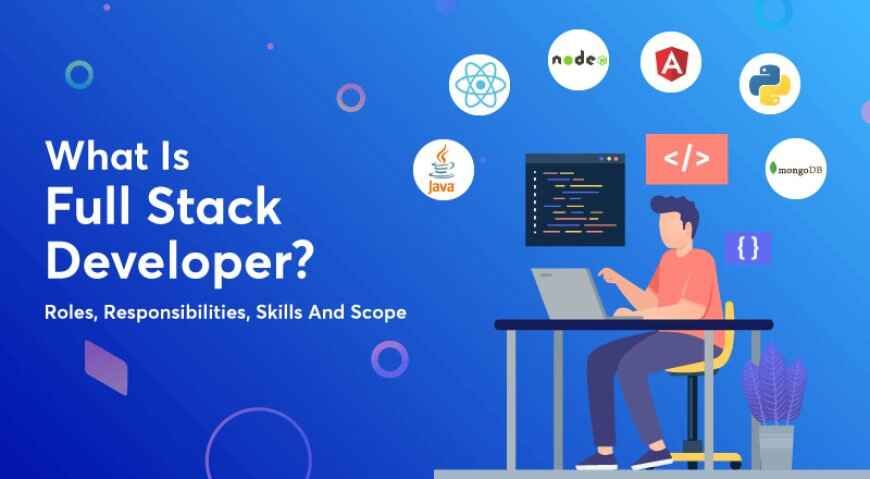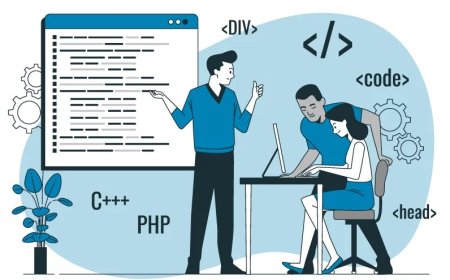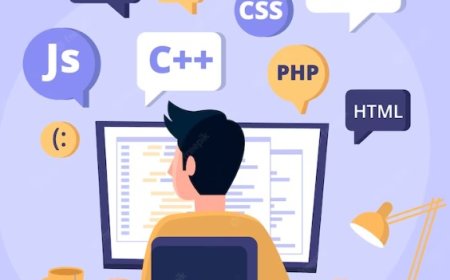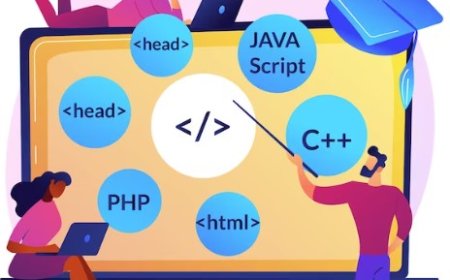What is Full Stack Development
Full Stack Development involves working on both the front end and back end of a website or application. It encompasses various technologies, including HTML, CSS, JavaScript for the front end, and languages like Python, Ruby, or Java for the back end.

Full Stack Development refers to the comprehensive skill set required to design, develop, and maintain both the front-end and back-end components of a software application. A full-stack developer is proficient in a wide range of technologies, encompassing not only the user interface and user experience (UI/UX) design but also server-side scripting, database management, and server infrastructure. This integrated approach allows these developers to work seamlessly across the entire software stack, from the visual elements that users interact with to the underlying server-side logic and database management.
Full-stack developers possess a versatile understanding of various programming languages, frameworks, and tools, enabling them to tackle challenges at every layer of a software application. Their ability to navigate both client-side and server-side development makes them invaluable contributors to the entire software development life cycle, fostering efficient communication and collaboration within multidisciplinary teams. In essence, full-stack development represents a synthesis of diverse skills that empowers developers to create end-to-end solutions and bring dynamic, responsive, and fully functional applications to life.

Challenges in Modern Web Development
Cross-browser Compatibility
Different web browsers interpret code in slightly different ways, leading to variations in how a website is displayed. Ensuring compatibility across major browsers such as Chrome, Firefox, Safari, and Edge can be a significant challenge.
Responsive Design
With the proliferation of devices with varying screen sizes and resolutions, creating a responsive design that works seamlessly across desktops, tablets, and smartphones is crucial. This involves using flexible layouts and media queries.
Performance Optimization
Users expect fast-loading websites. Optimizing assets, minimizing HTTP requests, and employing techniques like lazy loading are essential for a smooth user experience. Efficient handling of server-side processing and database queries is also critical.
Security Concerns
Security is a top priority in web development. Developers must guard against common threats such as cross-site scripting (XSS), cross-site request forgery (CSRF), and SQL injection. Regular security audits and staying updated on the latest security best practices are crucial.
API Integration
Modern web applications often rely on third-party APIs for functionality. Integrating these APIs seamlessly, handling authentication, and ensuring proper error handling are challenges developers face. Additionally, changes in third-party APIs can impact the functionality of the application.
Scalability
As user bases grow, the application must scale to handle increased traffic and data. Designing a scalable architecture that can accommodate growth without compromising performance is a continual challenge.
Version Control and Collaboration
Full-stack developers often work in teams, and version control systems like Git are crucial for managing code changes. Coordinating the work of front-end and back-end developers, and ensuring that everyone is working on the latest version of the code, requires effective collaboration.
Continuous Integration/Continuous Deployment (CI/CD)
Implementing CI/CD pipelines helps automate testing and deployment processes, ensuring that code changes are thoroughly tested before being deployed to production. Setting up and maintaining these pipelines can be complex but are crucial for maintaining a reliable development workflow.
User Experience (UX) and Accessibility
Providing a positive user experience is vital. This involves creating intuitive user interfaces and ensuring accessibility for users with disabilities. Meeting accessibility standards and addressing usability issues require careful consideration and testing.
Data Management
Handling and managing data efficiently is critical. This includes designing effective database schemas, optimizing database queries, and ensuring data consistency and integrity.
Maintainability and Documentation
As web applications grow, maintaining code becomes more challenging. Writing clean, modular, and well-documented code is essential for long-term maintainability. Lack of documentation can hinder collaboration and make it difficult for new developers to understand the codebase.
What is Full Stack Development?
Full Stack Development refers to the practice of developing both the client-side (front end) and server-side (back end) of a web application or software. A "full stack" developer is someone who possesses skills and expertise in both the front-end and back-end technologies, allowing them to work on all aspects of a project, from the user interface to the server and database.
Here are the key components involved in Full Stack Development:
Front-end Development
-
HTML/CSS/JavaScript: These are the fundamental building blocks for creating the structure, style, and interactivity of a website or web application. HTML defines the structure, CSS styles the presentation, and JavaScript adds dynamic behavior.
-
Frameworks and Libraries: Full-stack developers often work with front-end frameworks and libraries such as React, Angular, or Vue.js. These tools help streamline the development process, making it more efficient to build complex user interfaces.
-
Responsive Design: Ensuring that the application is user-friendly across various devices and screen sizes is a crucial aspect of front-end development. Responsive design techniques are employed to achieve this goal.
Back-end Development
-
Server-side Languages: Full stack developers are proficient in server-side programming languages like Node.js, Python (Django, Flask), Ruby (Ruby on Rails), Java (Spring), or PHP. These languages are used to handle business logic, process data, and interact with databases.
-
Databases: Full-stack developers work with databases to store and retrieve data. Common types of databases include relational databases like MySQL and PostgreSQL, or NoSQL databases like MongoDB.
-
Server and Hosting Environments: Understanding how to set up and manage servers is essential for back-end development. This includes knowledge of server-side frameworks (Express.js, Flask, Django), server deployment, and cloud platforms (such as AWS, Azure, or Google Cloud).
Database Management
-
CRUD Operations: Full stack developers need to be skilled in performing CRUD (Create, Read, Update, Delete) operations on databases. This involves manipulating data stored in databases based on user interactions.
-
ORM (Object-Relational Mapping): Full-stack developers often use ORMs like Sequelize, Hibernate, or SQLAlchemy to interact with databases using object-oriented programming principles.
Version Control/Git
Full-stack developers are expected to be proficient in version control systems like Git. This enables them to collaborate with other developers, track changes, and manage the project's codebase effectively.
DevOps and Deployment
Full-stack developers are involved in the deployment process, which includes configuring servers, setting up continuous integration/continuous deployment (CI/CD) pipelines, and ensuring the smooth deployment of applications.
Knowledge of Web Services and APIs
Full-stack developers should be familiar with creating and consuming APIs (Application Programming Interfaces) to enable communication between the front end and back end, as well as integrating third-party services.
Testing and Debugging
Full-stack developers are responsible for testing their code, both on the front end and back end, to ensure functionality, security, and performance. Debugging skills are crucial for identifying and fixing issues.
Full Stack Development is like being a jack-of-all-trades in the world of software. It involves handling both the visible parts that users interact with (front-end) and the behind-the-scenes stuff that makes everything work (back-end). A Full Stack Developer knows how to work with databases, servers, and user interfaces, making them versatile problem solvers in the field of web development. It's a role that demands a broad skill set but offers the satisfaction of creating complete and functional applications from start to finish.




























































